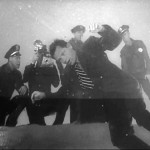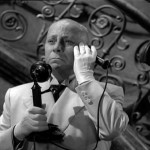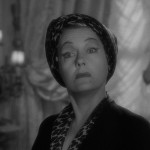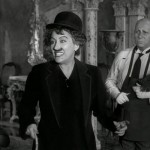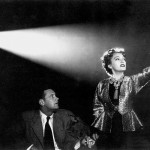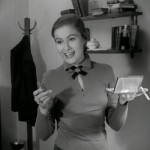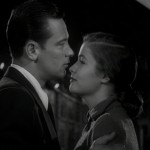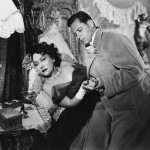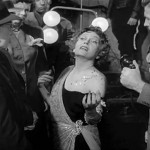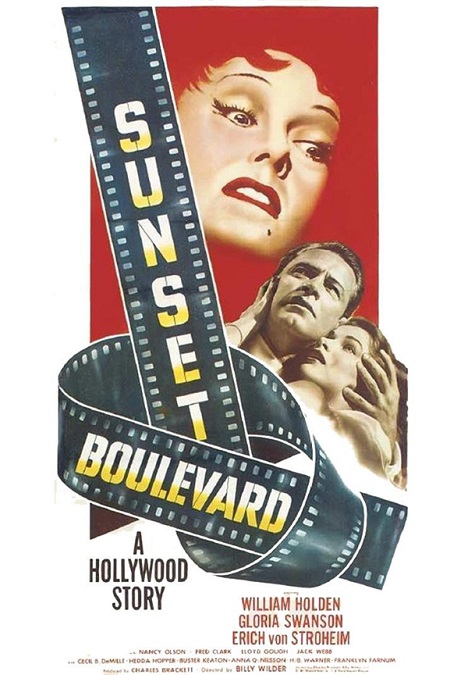
Sunset Boulevard – 1950
This was an excellent film. The story was simple on the surface and complex beneath. The casting was perfect, the sets were amazing and realistic, the acting was top notch, and the costumes were amazing. It was everything that a good film should be. I think it even hold up well by today’s standards, which is saying something for a movie that is 65 years old.
This is another wonderful example of a film noir, written and directed by Billy Wilder, one of the biggest names in Hollywood in the 30s, 40s, and 50s. He had a hand in either writing or directing other such great films as Ninotchka, Hold Back the Dawn, The Bishop’s Wife, Double Indemnity, The Seven Year Itch, AND Some Like It Hot, just to name a few.
The two leads are William Holden, playing Joe Gillis, a penniless writer in Tinsel-Town and Gloria Swanson playing Norma Desmond, a Hollywood has-been, living in seclusion. Filling out the supporting cast is Erich von Stroheim, playing the part of Norma’s obsessively devoted servant, Max, and Betty Schaefer, played by Nancy Olson, a hopeful writer who falls in love with Joe.
You see, the film starts out showing us Joe’s dead body floating in a swimming pool. After that all the movie’s narration is told, in true film-noir style, by the murder victim. Also in film-noir style, the scene then back up to tell us the story of how he ended up dead in a pool.
While on the run from men who are trying to repossess his car, Joe hides in a seemingly abandoned Hollywood dream-palace on Sunset Boulevard. He is greeted by Max, a funny little butler with a foreign accent. He is taken to see the lady of the house, Norma Desmond. She is a larger than life character. She is vain and haughty, in command of every conversation, witty, powerful, and altogether bonkers.
Swanson was incredible as the aging actress. She was somewhat sane on the surface, but the delusional craziness that lurked beneath came out easily and often. Swanson was actually an actress who had been in films in the silent era of Hollywood, so she had the over-exaggerated facial expressions, the grand movements, and the intense eyes that were necessary traits for actors in that by-gone era.
Edith Head designed the costumes beautifully, mixing older styles with modern fashions of the 50s, and adding just a touch of flamboyant madness to sweeten the pot.
Norma hires Joe to work on a film script that is supposed to usher in a new era in her life, her comeback to the silver screen. She still lives with the idea that she is one of the biggest stars in the business. Joe, however, knows that she has been away from the public eye for too long. She has been all but forgotten. He wonders how she can maintain her delusion, only to find out that Max, once her director, then her husband, and now her willing slave, fabricates fan mail and phone messages, letting her think that her star has never faded.
But things get complicated when Norma falls in love with Joe. Like everything else in her life, her love is grand and obsessive. But Joe finds love with Betty, a girl wanting to turn one of his stories into a script. Norma finds out about Joe’s wanderings and rather than allowing him to leave her, she murders him.
What follows is one of the best scenes in the movie. The police arrive to take her away but her mind is gone. She is no longer in touch with reality. She sits at her dressing table, putting on her make-up. The only one who can get her to come down the grand staircase is Max. He tells her that the cameras have arrived. Of course, the only cameras present are the news cameras, photographing the murderess. When Max shouts, “Action!” Norma makes her dramatic entrance, and we get to hear her say that famous line, “All right, Mr. DeMille, I’m ready for my close-up.”
The film certain has it cringe-worthy moments of creepy, not in the sense of horror movie creepy, but in the sense of a woman walking a tightrope between obsessive love for a man half her age, and homicidal madness. Add to that the narration by a deceased man and the gothic dream-palace which is always shown in an advanced state of decay, and you have enough creepy to catch our interest and imaginations.
And lest I forget, I have to mention that Holden did a fine job as well, though if truth be told, he was fairly unmemorable, simply because he was constantly being upstaged by Swanson. But then, that was the point of her character, wasn’t it. She desperately desired to be the complete center of attention. “You used to be in silent pictures. You used to be big.” “I am big! It’s the pictures that got small.” Indeed.
